Climate Change and Poverty Deadly for Dominicans | Cambio climático y pobreza son nefasto para dominicanos
Climate change and poverty, a deadly cocktail for Dominicans
By Patricia Grogg
IPS
English | Spanish
Santo Domingo, Dominican Republic — “Nobody mourns the poor, you know.” That is the grim conclusion of a resident of La Ciénaga, one of the many poverty-stricken settlements clustered along the banks of the Ozama River in the Dominican capital, and which are at the mercy of the weather.
The man has nothing more to say, refusing to have his picture taken or give his name.
“I wish they’d take us out of here, find us a safer place,”
his wife adds, looking out onto the Ozama River, which is almost at the threshold of the makeshift shelter they call home.
A few metres away, Josefa Moya is more forthcoming.
“This whole area floods whenever it rains a lot and it takes at least three days for the water to drain from our houses. I live alone and clean houses for a living, so moving is not an option for me,”
she tells IPS.
Her comments receive nods of approval from a group of women from the township who are standing around her with babies in their arms. They too have no other alternative.

Dredging the river would lower the risk of flooding, La Ciénaga residents say (Photo: Dionny Matos).
José Sánchez leads IPS in an improvised tour through the maze of narrow streets where, he says, some 8,000 families live.
“When a cyclone hits or heavy rains come, the river swells, dragging all sorts of garbage with it. I think that’s why this neighbourhood floods so much,” Sánchez says.
According to him, in the last five years the situation has become increasingly worse.
“Every time there’s a flood they say they’re going to relocate us, but, as you can see, we’re still here,” he says.
Independent sources estimate that some 400,000 people live on the banks of the two main rivers of Santo Domingo – the Ozama and the Isabela – where they are exposed to weather hazards that are expected to become more intense and devastating.
Interviewed by IPS, environment and natural resource minister Ernesto Reyna confirms that one of the “huge challenges” his country faces in its efforts to adapt to climate change has to do precisely with this impoverished sector of the population, which is highly vulnerable to cyclones, heavy rains and other extreme climate events.
Reyna says these families settle in the middle basins, where water levels are low during long periods of drought.
“They see it as a viable place to set up a house and even plant a small vegetable garden. They don’t think there will be any problems if they settle there,” he says.
“But then a storm comes, and it doesn’t even have to be a hurricane, just a spell of heavy rains, which combined with deforestation and our poor (basin) management, causes flash floods so devastating in force that they destroy everything in no time,” Reyna explains.
In 1998, Hurricane George left 235 people dead in the Dominican Republic and cost the country some 146 million dollars, according to official estimates.
In October 2007, Tropical Storm Noel had caused 439 million in material losses (equivalent to 1.2 percent of that year’s gross domestic product) and claimed 87 lives, with another 42 people reported missing.
Recovering from these natural disasters is very costly, Reyna notes.
“Our great misfortune,”
he says referring to the region,
“is that just as we’re coming out of a difficult economic situation, a hurricane comes and wipes out all our savings. So we can never overcome the poverty the majority of our people live in.”
Data from the World Bank (WB) and the Inter-American Development Bank (IADB) indicate that 43 out of every 100 Dominicans were poor in 2004 and 16 out of 100 qualified as abject poor. According to reports from the United Nations, in the following six years these indicators dropped to 34 and 10.4 percent, respectively.
Projected climate change impacts for the Dominican Republic are not at all promising.
According to Reyna, this country of 9.5 million people, which shares the island of Hispaniola with Haiti, the poorest country of Latin America and the Caribbean, could lose about a fifth of its territory to rising sea levels.
“I’ve lived here for 17 years and I can tell you that in the last five years the rains have been getting more and more intense, and that has brought more floods. Everyone knows this is caused by climate change,”
Eridania Rosario Marcelo, president of the La Barquita neighbourhood association, told IPS.
This Ozama River bank community, located in the district of Las Mina, has made repeated requests to have the river dredged to remove garbage and other obstructions that cause the river to overflow.
“We’ve asked and asked, but nobody listens. If they dredged this part of the river to get rid of all the garbage that the water drags down, the risk wouldn’t be as high,” she claims.
At the start of the hurricane season, which spans from June to November, local residents begin to take greater precautions, monitoring the Ozama to see if the water rises and gathering tarpaulin sheets to set up “a small house” in the high section of the bridge as an emergency shelter just in case.
“We live in constant risk,” Marcelo says.
Omar Ramírez, vice president of the National Council for Climate Change and Clean Development Mechanism, told IPS that
“70 percent of the cities in the Dominican Republic are built on the banks of rivers or other waterways… These areas are covered by a proliferation of extremely poor urban settlements,” he admits.
In this sense, Ramírez stresses the importance of the “mandate” established under article 194 of the 2010 Constitution, which calls for land planning solutions that meet climate change adaptation needs.
The issue is also included in the strategic plan developed to face climate change.
“Land planning is a difficult and complex issue to address, but it is not impossible. Solutions can be achieved through social alliances,” Ramírez says.
The climate change body was created in September 2008 with the purpose of coordinating and synchronising state efforts aimed at mitigating and adapting to global environmental risks.
Source: IPS
Cambio climático y pobreza, nefasto cóctel para dominicanos
Por Patricia Grogg
IPS
español | inglés
Santo Domingo, Republica Dominica — “Doña, la pobreza no tiene doliente”. El hombre solo dice eso, se niega a ser fotografiado y a dar su nombre.
“Ojalá nos sacaran de aquí para un lugar más seguro”,
completa su esposa, mirando el río Ozama, que casi lame las puertas de la choza que los mal alberga en la capital dominicana.

El ordenamiento territorial es un mandato constitucional en República Dominicana (Foto: Dionny Matos).
Unos metros más allá, Josefa Moya es algo más locuaz.
“Todo esto se inunda cuando llueve mucho y el agua demora como tres días en salir de las casas. Vivo sola y hago trabajo doméstico, no puedo ni pensar en irme de aquí”,
relata a IPS. Algunas vecinas que la rodean con sus hijos en brazos asienten con la mirada. Ellas tampoco tienen otras opciones.
La Ciénaga es uno de los tantos asentamientos que se apretujan a orillas del río Ozama, en Santo Domingo. José Sánchez, un improvisado guía que le abre el paso a IPS entre callejuelas y estrechos pasajes, indica que allí residen unas 8.000 familias.
“Cuando hay un ciclón o lluvias intensas, el río crece y a la vez arrastra basura de todo tipo. Yo creo que por eso se inunda tanto este barrio”, comenta Sánchez.
Según sus cuentas, en los últimos cinco años la situación ha empeorado.
“Tras cada inundación dicen que nos van a desalojar, pero ya ve, aquí seguimos”, agrega.
Según fuentes independientes, en las riberas de los ríos Ozama e Isabela, los dos principales de Santo Domingo, habitan unas 400.000 personas expuestas a eventos hidrometeorológicos que se prevén más intensos y devastadores que los registrados hasta ahora.
En entrevista con IPS, el ministro de Medio Ambiente y Recursos Naturales de República Dominicana, Ernesto Reyna, confirma que uno de los “retos fuertes” de su país en materia de adaptación al cambio climático apunta justamente hacia a ese sector empobrecido de la población, extremadamente vulnerable a eventos como ciclones o lluvias intensas.
Reyna comenta que estas familias se asientan en las cuencas medias, en las cuales por períodos largos de sequía ha habido una disminución del caudal de los ríos.
“Ven ahí un área factible para levantar su hogar e inclusive tener alguna producción agrícola. Creen que no habrá inconveniente en establecerse en esos lugares”, dice.
“Pero es así hasta que viene una tormenta, no necesariamente un huracán, sino un período de lluvias intensas que, asociadas a la deforestación o a malos manejos nuestros (en las cuencas), producen grandes escorrentías que en un tiempo mínimo y con fuerza devastadora acaban con todo lo que tengan a su paso”, explica.
En 1998, el huracán George costó a República Dominicana la muerte de 235 personas y perjuicios materiales estimados oficialmente en unos 146 millones de dólares. En octubre de 2007, la tormenta Noel dejó pérdidas económicas por 439 millones de dólares (que equivalían entonces a 1,2 por ciento del producto interno bruto), 87 fallecidos y 42 desaparecidos.
Recuperarse de tales desastres es muy costoso, considera Reyna.
“La desgracia de nuestros pueblos (de la región) es que cuando se están recuperando de una situación económica difícil viene un huracán y nos lleva nuestros ahorros. Entonces nunca podremos salir de esta situación de pobreza que tienen nuestras mayorías”, comenta.
Datos del Banco Mundial y del Banco Interamericano de Desarrollo (BID) indican que 43 de cada 100 dominicanos eran pobres y 16 eran indigentes a fines de 2004. Esos indicadores bajaron seis años después a 34 y 10,4 por ciento respectivamente, según informes de la Organización de las Naciones Unidas.
Los vaticinios sobre el impacto del cambio climático no son para nada halagüeños respecto de República Dominicana, con 9,5 millones de habitantes y que comparte la isla La Española con Haití, el país más pobre de América Latina y el Caribe.
Según Reyna, su país podría perder alrededor de la quinta parte de su territorio debido al previsible aumento del nivel medio del mar.
“Vivo aquí hace 17 años y sí puedo decir que en los últimos cinco años hemos tenido lluvias más intensas y, en consecuencia, más crecidas del río. Ya se sabe que la causa es el cambio climático”,
comenta a IPS la presidenta de la Junta de Vecinos de La Barquita de Los Mina, Eridania Rosario Marcelo.
La comunidad, ubicada también a orillas del río Ozama, ha solicitado en repetidas ocasiones que se drague el curso fluvial para mantener limpios los desagües y evitar que se desborde.
“Estamos cansados de pedirlo, pero no se nos escucha. Si esta parte del río se dragara para sacarle toda esa basura que arrastra, el peligro disminuiría”, asegura.
Con el comienzo de la temporada ciclónica, que va de este mes a noviembre, los vecinos aumentan sus precauciones, vigilan las aguas del Ozama para prever si suben de nivel y recogen lonas para hacer “una casita” en la parte alta del puente como albergue de emergencia en caso de necesidad. ”
Vivimos en riesgo permanente”, comenta.
A su vez, el vicepresidente del Consejo Nacional para el Cambio Climático y el Mecanismo de Desarrollo Limpio, Omar Ramírez, afirma a IPS que
“70 por ciento de las ciudades dominicanas se encuentran a orillas de un cauce fluvial (….). Hay una proliferación de asentamientos urbanos en condiciones de extrema pobreza en esas áreas”, admite.
En ese sentido, Ramírez considera clave el “mandato” para un ordenamiento territorial acorde con las necesidades de adaptación al cambio climático plasmado en el artículo 194 de la Constitución desde 2010.
El tema también forma parte del plan estratégico para afrontar las transformaciones climáticas.
“La planificación territorial es un asunto difícil y complejo, pero no imposible. Se puede construir mediante alianzas sociales”,
asevera Ramírez. El Consejo para el cambio climático fue creado en septiembre de 2008 con la misión de articular y coordinar a las instituciones del país para mitigar y adaptarse a los riesgos ambientales de carácter global.
Fuente: IPS

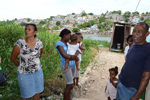
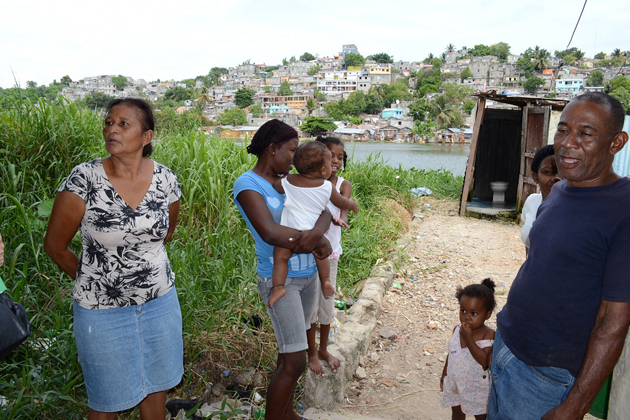
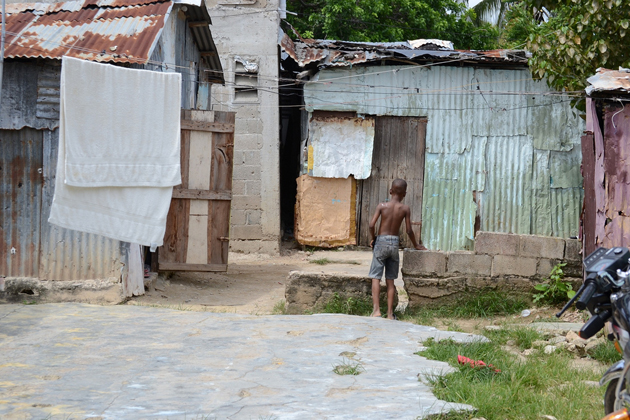
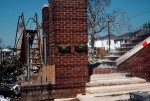
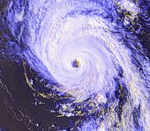

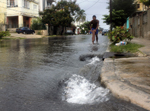
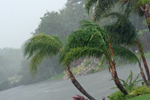

Comments
Climate Change and Poverty Deadly for Dominicans | Cambio climático y pobreza son nefasto para dominicanos — No Comments